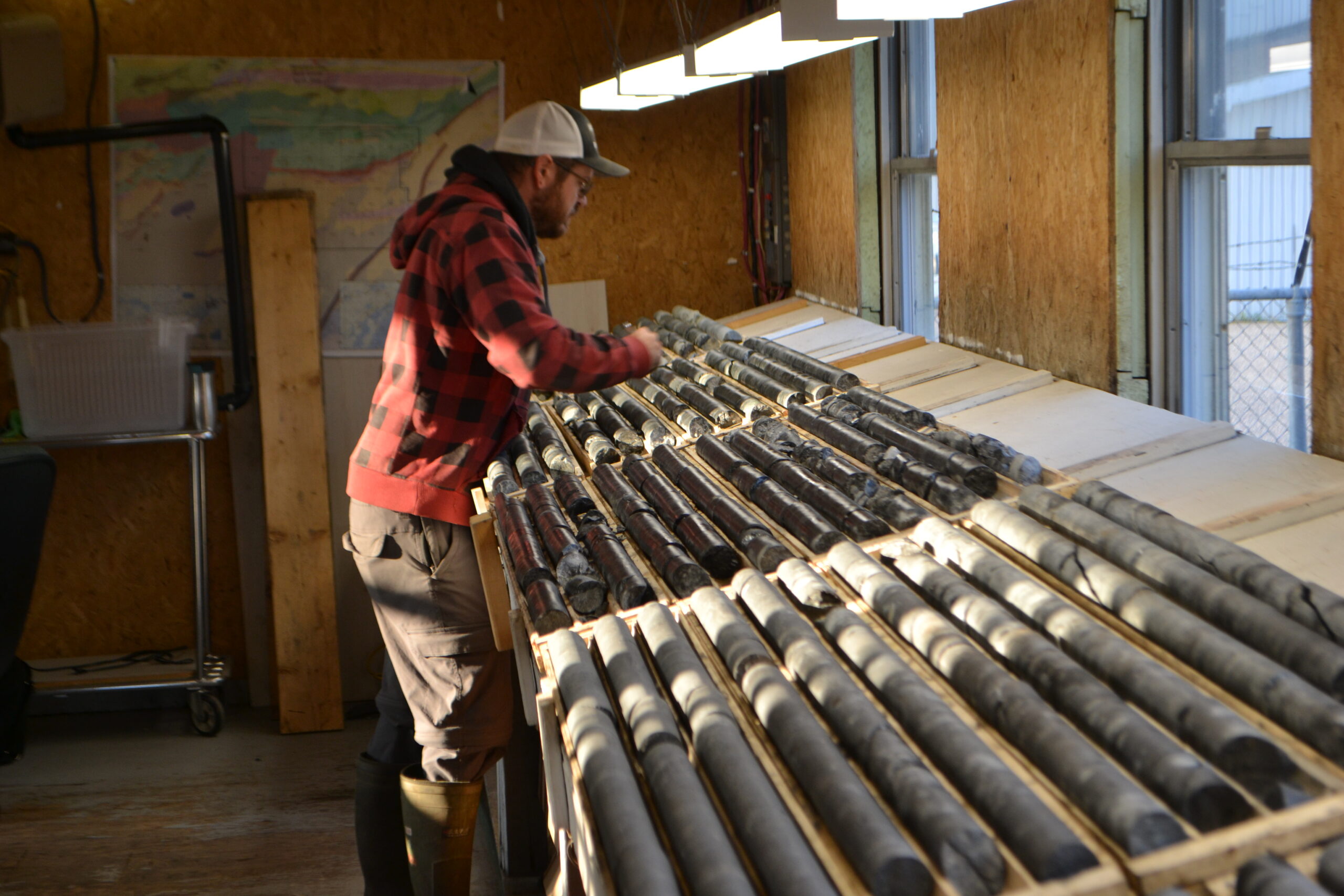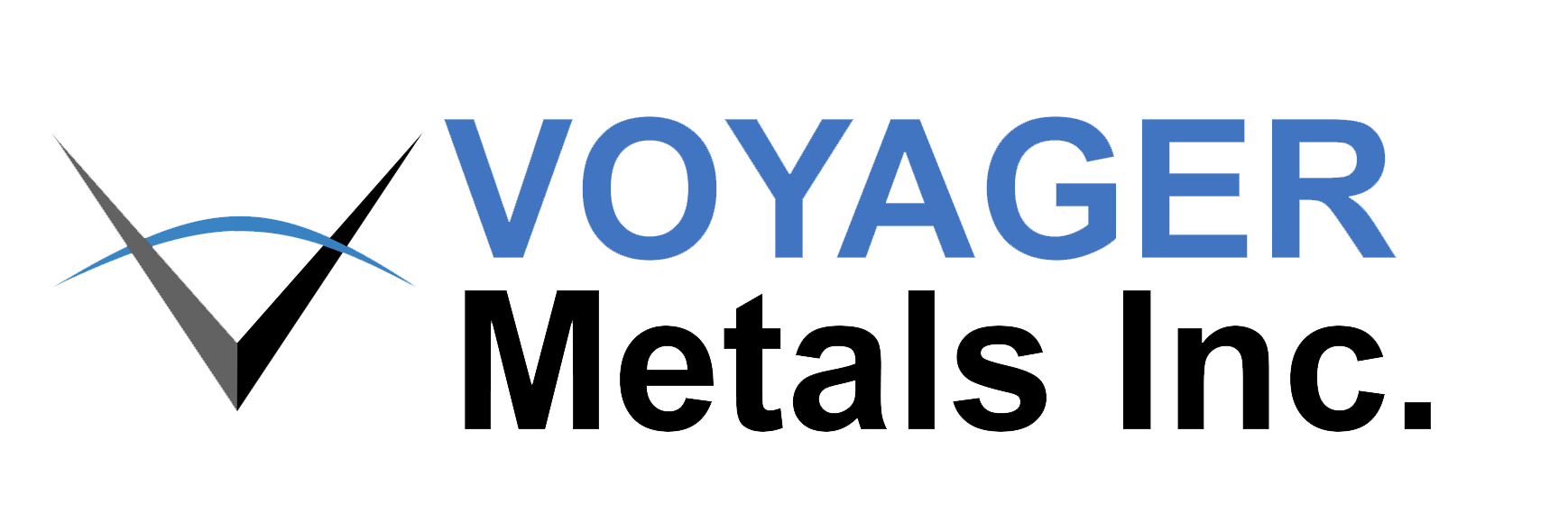Mineral Resource Update 2022
2022 Mineral Resource Estimate Highlights
Voyager Metals completed a new mineral resource estimate in June 6th 2022 to support a Feasibility study expected to be completed Q2 2023.
The updated NI 43-101 Mineral Resources Estimate for the North Zone includes 559M tonnes of Indicated Resources grading 28.2% magnetite and 470M tonnes of Inferred Resources grading 26.4% magnetite.
The North Zone Indicated Resource have the potential to produce 163M tonnes of magnetite concentrate grading at least 65% Fe and 0.52% vanadium pentoxide (V2O5).
The South Zone updated mineral resource includes 119M tonnes of Indicated Resources grading 25.6% magnetite and 76M tonnes of Inferred Resources
grading 24.1% magnetite resources

Notes to accompany the Mineral Resource Estimate:
• The independent and qualified persons for the mineral resource estimate, as defined by NI 43-101, are Marina Iund, P.Geo., Carl Pelletier, P.Geo., Simon Boudreau, P.Eng. all from InnovExplo Inc. and Mathieu Girard P.Eng from Soutex. The effective date is June 6th, 2022.
• These mineral resources are not mineral reserves, as they do not have demonstrated economic viability. The mineral resource estimate follows current CIM definitions and guidelines.
• The results are presented undiluted and are considered to have reasonable prospects for eventual economic extraction by having constraining volumes applied to any blocks using Whittle software and by the application of cut-off grades for potential open-pit extraction method
• The estimate encompasses two (2) deposits (North and South), subdivided into 8 individual zones (7 for North, 1 for South).
• No high-grade capping was applied.
• The estimate was completed using sub-block models in GEOVIA Surpac 2021.
• Grade interpolation was performed with the ID2 method on 4 m composites for the North deposit and on 10 m composites for the South deposit.
• The density of the mineralized zones was interpolated with the ID2 method. When no density analysis was available, the density value was estimated using linear regression with Fe2O3 analysis. For the unmineralized material, a density value of 2.8 g/cm3 (anorthosite and volcanics), 3.5 g/cm3 (Massive sulfide formation) and 2.00 g/cm3 (overburden) was assigned.
• The mineral resource estimate is classified as Indicated and Inferred. The Inferred category is defined with a minimum of two (2) drill holes for areas where the drill spacing is less than 400 m, and reasonable geological and grade continuity have been shown. The Indicated category is defined with a minimum of three (3) drill holes within the areas where the drill spacing is less than 200 m, and reasonable geological and grade continuity have been shown. Clipping boundaries were used for classification based on those criteria.
• The mineral resource estimate is locally pit-constrained for potential open-pit extraction method with a bedrock slope angle of 50° and an overburden slope angle of 30°. It is reported at a rounded cut-off grade of 2.30 % Weighted recovered Fe (Fe % x Process Recovery). The cut-off grade was calculated for the concentrate using the following parameters: royalty = 3%; mining cost = CA$3.30; mining overburden cost = CA$2.45; processing cost = CA$3.62; G&A = CA$0.75; selling costs = CA$58.36; Fe price = CA$190/t; USD:CAD exchange rate = 1.3; and mill recovery = 100% (concentrate). The cut-off grades should be re-evaluated considering future prevailing market conditions (metal prices, exchange rates, mining costs etc.).
• The number of metric tonnes was rounded to the nearest thousand, following the recommendations in NI 43-101 and any discrepancies in the totals are due to rounding effects.
• The authors are not aware of any known environmental, permitting, legal, title-related, taxation, socio-political, or marketing issues, or any other relevant issue not reported in the Technical Report, that could materially affect the Mineral Resource Estimate.
• Note that the Inferred in the current table are slightly different from those disclosed on June 9, 2022. In the course of writing this technical report, some adjustments were made to some deep inferred blocks in the block model resulting in a small decrease of the inferred MRE. The total has gone from 595 Mt to 547 Mt total inferred. The lost tonnage of Inferred is transferred to exploration potential.
The MRE has defined an Indicated Mineral Resource in the North Zone of 559M tonnes grading 28.2% magnetite and 0.21% V2O5, with an additional 470M tonnes grading 26.4% magnetite and 0.18% V2O5 in the Inferred category up from 809M tonnes of Inferred Resources in the prior Mineral Resources Estimate. This represents a total mineral resource tonnage increase of 31% in the North Zone.
Total Indicated Resources for both the North Zone and the South Zone are now estimated at 679M tonnes grading 27.7% magnetite and 0.20% V2O5, with the potential to produce 195M tonnes of magnetite concentrate grading at least 65% Fe and 0.52% vanadium pentoxide (V2O5).
Total Inferred Resources for both the North Zone and the South Zone are now estimated at 547M tonnes grading 26.1% magnetite and 0.17% V2O5, with the potential to produce 148M tonnes of magnetite concentrate grading at least 65% Fe and 0.52% vanadium pentoxide (V2O5).


Based on recent Davis Tube test results, metallurgical testwork to date supports the production of iron concentrate with grades of at least 65%. Further more detailed testwork is being undertaken as part of the Feasibility study to further define the final grades of iron concentrate.

Sign up for our newsletter
